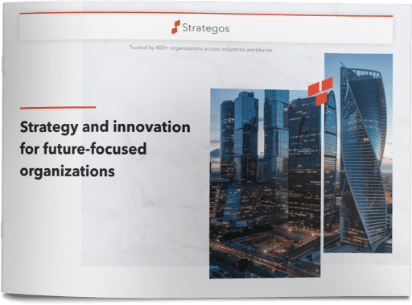The notion that innovation is a key driver of top-line growth and total shareholder return is widely accepted among business leaders everywhere – as evidenced by their ongoing (and escalating) commitment to investment in innovation initiatives and new product development.
The case for more radical, Game Changing innovation, the kind that ushers in new business models and in the process disrupts entire industries, is even more compelling. The top 10 “unicorns”, venture-backed companies such as Uber, Xiaomi, Snapchat, Flipkart and Palantir, have created a combined market capitalization in excess of $180 billion and have done so at unprecedented speed.
Top-tier innovation leaders such as Apple, Google, Samsung and Amazon illustrate, year after year, the power of effective innovation programs in driving superior growth in revenues and shareholder returns. Growth stories such as these are not confined to the technology sector nor to just startups and industry insurgents. Incumbents, such as GE, PG&E and IBM, with innovation track records spanning decades, continue to reap the rewards of institutionalized innovation.
For many companies however, despite escalating investment in innovation, results are frequently elusive. Innovation programs often fail to generate the levels of return on investment that are expected in timeframes that are acceptable. More often than not innovation programs are delivering incremental improvements rather than game changing solutions.
At Strategos we are often asked by our clients “how do I raise my game as an innovator” and more specifically “how do I organize for game changing innovation”?
Often we find that companies whose innovation programs are failing to deliver anticipated results have taken a piecemeal approach to the problem. They may have identified one or more of the relevant drivers of innovation but they are not managing them as an interconnected system. More fundamentally, they often lack a foundation of organizing principles with which to construct an effective innovation system.
In our experience, highly effective innovation systems are usually based on a relatively small number of organizational principles:
Broaden the “Front End” of Innovation
Opening the innovation pipeline to a broad array of inputs from a diversity of sources significantly increases the probability of generating new wealth downstream. Innovation leaders routinely tap into the “wisdom of crowds” in order to glean new perspective and identify radical new ideas. The “crowd” may be internal (as in the case of IBM’s employee “idea jams”) or external (as in the case of InnoCentive’s Open-Innovation marketplace). Raising the ratio of externally sourced ideas to internally sourced ideas typically generates a higher yield from the innovation pipeline.
Invest in Developing Deep Customer Insights
Top-tier innovators are deeply empathetic. They invest in developing deep insights into the unarticulated needs of their customers. They identify needs that customers aren’t yet aware that they have, or solve common customer problems in new and creative ways. Traditional market research is of little use in this context. Instead, what’s required is an immersion into the customer’s environment and the use of tools and techniques that derive insights from in-person research.
Seek Innovation at the Level of the Business Model
In today’s highly dynamic market environments with rapidly proliferating customer segments, existing business models have a limited shelf life. Business model innovation (BMI) is therefore an essential strategy for driving value-creating growth. Although BMI is more challenging than traditional product or service innovation it often generates game-changing outcomes and typically generates superior returns over time.
Manage a Portfolio of Growth Options
Top-tier innovators are highly effective at actively managing a pipeline of strategic growth opportunities. They bring management discipline to de-risk each stage of the opportunity lifecycle from ideation through development, experimentation and commercialization – including clear processes to kill underperforming projects. They construct balanced portfolios of growth options, which include both longer-term “game changing” opportunities as well as closer-in “adjacent” innovations. Often these innovation portfolios are focused around one or more defined opportunity domains or strategic “aiming points”.
Implement Strong Governance Mechanisms
Top-tier innovators are disciplined. They establish well-defined and transparent processes and decision criteria for managing at the level of both the individual project and the innovation pipeline and portfolio. Team composition, communication and engagement is also critical to success.
Create a Culture that Fosters Breakthroughs
High-performance innovation cultures are designed for speed and adaptation. Increasing the clock speed of the “experiment-learn-pivot cycle” is critical. Failing fast and cheaply is what enables top-tier innovators to move quickly down the experience curve. Innovation metrics and KPIs must extend beyond traditional R&D and product development metrics, which fail to measure the company’s overall innovation capability. It’s not enough to measure innovation outputs, we also need to measure innovation inputs and throughputs.
Manage Innovation as a Core Competence
In order to innovate and grow successfully over the long term, there must be a commitment to embedding and institutionalizing innovation as a core competence within the organization. Typically, this is a senior leadership challenge and the mandate begins at the top, with the CEO.




